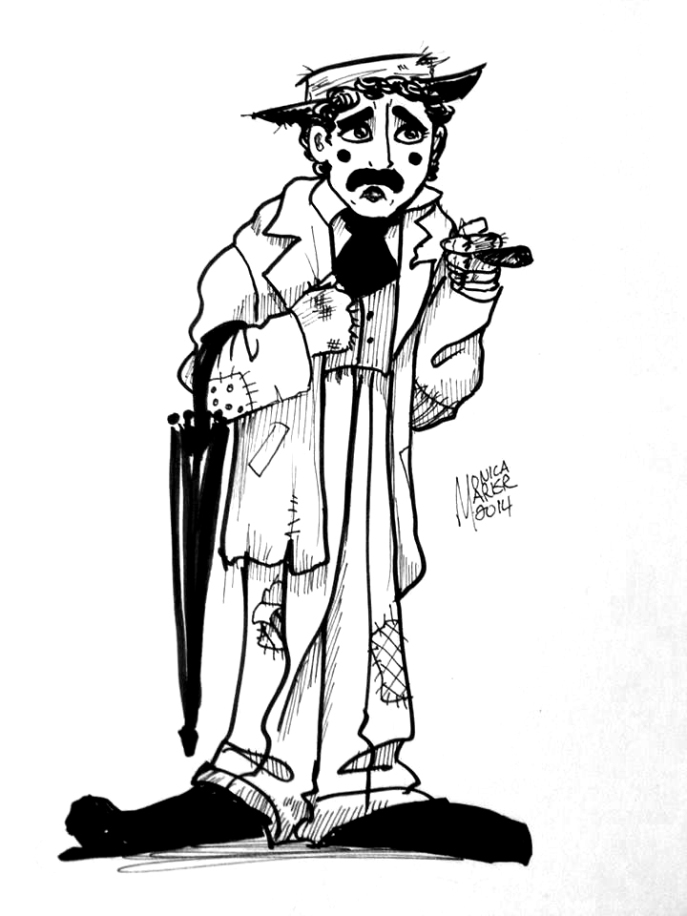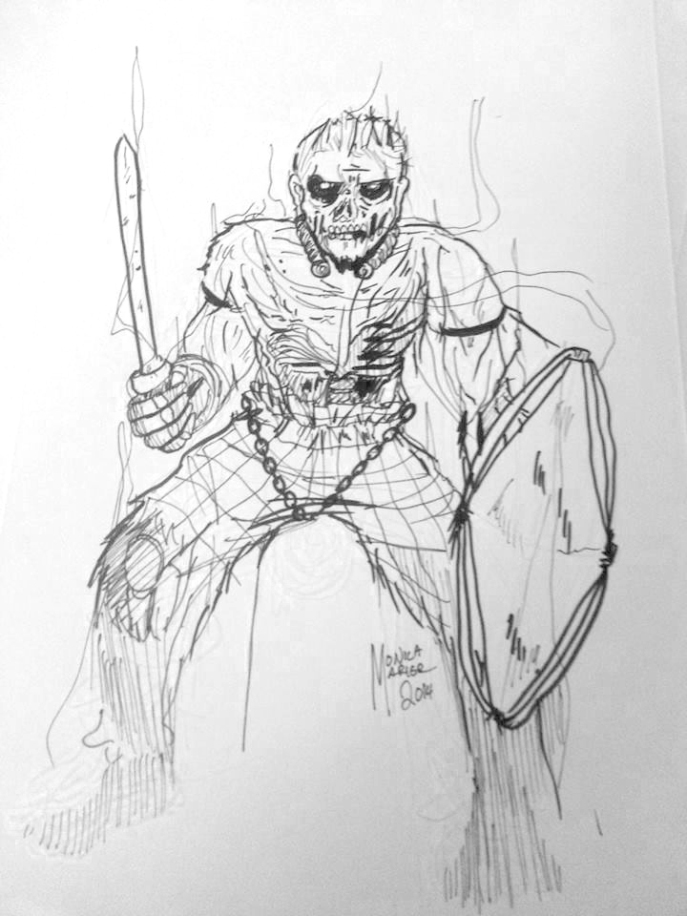Last week, I talked about peppering conversations with information so that any eavesdroppers can learn something useful. Today, I discuss how to improvise bartering and interrogations.
Before I do, let me share with you one of my favorite Improv exercises: the Bus Stop. These are the rules:
- There is a bus stop with a short bench next to it. The bus is a very full bus (due to arrive soon), and it will only have enough room for one more person.
- Player 1 starts on stage, sitting in the first seat at a bus stop. This person is first in line, and thus is the only person guaranteed to get a spot on the bus. Goal: Player 1 wants to stay in the first seat so they can get on the bus.
- Player 2 enters the stage. This person is next in line for the bus, and will not get a spot on the bus, unless they can convince Player 1 to give up their seat. Goal: Player 2 wants that seat, so they will get the last seat on the bus.
- There is a second seat next to the first one, which is “behind” it in the line for the bus. The Second player can sit there if they like.
- Safety Rules: The second player cannot directly or indirectly touch Player 1, Player one’s chair or anything touching that person. They cannot cause Player 1 any real harm. (Threatening with pretend harm, such as revving up a pantomimed chainsaw, is perfectly fine.)
- If/When Player 1 is convinced to give up, Player 2 sits in the #1 chair. Player 2 stops being the character they were, and becomes a new ordinary person. If there is another willing participant, that person is the new Player 2, and a new scene begins.
- (There’s one more rule, but I’ll discuss it later)
That’s the set-up. If you’re playing with students new to improv, it might require showing them first, but they quickly get the hang of it. Players will quickly devise a wide range of ways to get Player 1 to move, but most of them fall into 2 tactics: the Carrot and the Stick.
The Carrot: Like a carrot dangling in front of a donkey, the player is tempted with something better than sitting in the Number 1 seat. Examples include showering a player with imaginary money, giving them the keys to a brand new car, and telling them that the pet store down the street is giving away free magic puppies.
The Stick: A form of negative reinforcement. The player is led to doubt whether the Number 1 seat is worth enduring their current situation.
As you can imagine, most players find the Stick far more fun, as they put on strange characters that are creepy, disgusting or downright terrifying.

So, the essential question is: what is the point of this game?
Answer: To see what happens when two people have conflicting objectives.
Two people want the seat, but only one can have it. Both people have an Objective, which gives the scene purpose (get the seat), energy (I want the seat now!), and a means of measuring success (I got the chair!)
Using this with rpgs: When running an adventure, it is important that you keep the Bus stop game in mind because both sides must have a stake in the outcome. If the opposition has no interest in the seat, there’s no conflict. If players have no interest, they won’t waste their time. If both sides want something they cannot share, that’s when conflict occurs.
Of course, this can be a literal thing (a MacGuffin like the Maltese Falcon or the Dragon Balls), but it can also be an intangible thing, like fame or love. A classic goal that shows up, especially in Superhero stories, is the Status Quo. Bad guys want to establish a status quo of pain, darkness and oppression, while the heroes try to maintain a status of truth, justice and the American way. Now, such finalized “there can be only one” goals are great for long term, campaign long objectives. For a simple bartering session or interrogation, though, it might not work. Before I tell you how to do it RIGHT, let me tell you how it’s often done wrong.
Back in college, I encountered a similar version of the Bus Stop game, simply called “The Chair.” Like Bus Stop, Person 1 sat in a chair, and Person 2 wanted to sit in the chair. No other rules were established, which led to the following problems:
- Person 1 would refuse to move for any reason, and those the scene would drag out forever, went nowhere, and often concluded without any feeling of closure.
- The only time Person 1 left the chair was when the person was physically removed (remember, no other rules,) which was a little scary to watch, and was quite unfulfilling on an intellectual level.
Now, why did Person 1 refuse to let go? Because they had no idea why they wanted the chair, or how important the chair was to them. They wanted the chair because they were told they wanted the chair- which is shallow and two-dimensional. More importantly, they didn’t know what the chair was worth to them, and thus the Carrot and the Stick have no effect- they only work if you can present something better / worse than possession of the chair.
Likewise, whenever I run the Bus Stop game, I’ll always have a student who refuses to leave the chair, no matter what the reason. A player could point an imaginary howitzer at them, and Player 1, 3 seconds away from annihilation, would still refuse to budge. This leads me to the last rule when I run a game of Bus Stop:
- If Player 2 can give Player 1 a legitimate reason to leave the seat, Player 1 must move. (Legitimate is defined as “if this actually happened to you in real life, you would not stay.”)
This means that in most cases, Player 2 will always win (which, if you’re a teacher running a class, means more people get to play.) However, not all Player 2s win on their first attempt. Some of the shyer or less experienced players will attempt to creep out a player, but in an underwhelming way. They quickly learn that they have to up their game, and begin pushing the character to a greater and greater extreme. Likewise, some players attempt to bait someone with a Carrot, and when that fails, resort to the Stick.
How does this apply to rpgs: You, the GM, are Player 1. You have the thing that Player 2 wants. Nine times out of ten, Player 2 is going to get SOMETHING, be it information, assistance, or something shiny- if negotiations are completely closed and they walk away with nothing that can help them, then everyone just wasted their time. They need to get closer somehow, even if it’s the knowledge that they need something better to bargain with.
When improvising dialogue with a player, keep in mind two things:
The Carrot – What does the NPC want even more than the thing they have?
The Stick – What repulses the NPC so greatly that it surpasses their desire to hold on to the thing?
Your NPC can start at a ridiculously high asking price, and then bargain down from there. Alternatively, let the players offer greater and greater Carrots and increasingly threatening Sticks until the NPC is significantly motivated. (When in doubt, refuse the first offer.)
Interrogations: Remember that earlier rule “you can’t touch the player?” That might seem like a good rule for middle schoolers, but surely that doesn’t apply to your bastard-sword wielding murder hobos, right? Wrong!
In an interrogation, there are limits to what Sticks you can use (and that’s assuming you don’t have pesky things like “morals”). If the interrogated party has priceless information that only they can share, they know that the players can’t kill them, thus removing the harshest Stick available the players.
Bartering on the Fly
In a perfect world, you’ll have plenty of prep time to plan what the NPCs truly want, and what strange errands you can send them on before you will yield.
However, we don’t live in a perfect world, and you might find your party bartering with an NPC you created 38 seconds ago. In addition to all of the above advice, a few other ideas:
- Money is pretty much worthless to players- it’s numbers on a page. Sure, you can accept it when bargaining, but it doesn’t create any dramatic tension. However, what if the NPC takes a liking to a minor piece of equipment that a player has? (Not their treasured heirloom, but something useful that they like.) Now the player is forced to choose: which is more important, their Wand of +2 Lightning, or the mission?
- The exception to the above idea is if an NPC asks for an exorbitant amount of money in a very narrow window. For example, what about half-a-million dollars in 48 hours? Suddenly, the players feel the pressure to come up with a very large sum under possibly desperate circumstances. If you didn’t have time to plan an even trade for the players, this buys you time, and puts the emphasis on the players to come up with ways to scrounge up the money. Now they’re the ones brainstorming various side quests they can do to raise dough, rather than making you come up with it.
- Get Personal – If the thing they are after is relatively insignificant (but you want to draw it out a little, so it’s not too easy,) sell it at the cost of a little public humiliation. Ask for a small favor from a character that is their least favorite thing to do. Make the raging berserker sit still, or the proud noble ask “pretty please with a cherry on top.” Make sure you differentiate between humiliating characters and humiliating people; some players have no problem singing and perform, but for others that’s a fate worse than death.
- Mediator – To switch things up a little, make the players the impartial middle between two opposing forces, and make the players come up with the compromise. For example, they might need the help of a magistrate, but the magistrate is so busy settling a local quarrel over a stolen pig. If the players want help from the magistrate (they can’t wait), they must first act as the mediators between two feuding forces. This requires a little bit of prep work, but for a change, the GM doesn’t have to come up with what the terms of the compromise are; rather, the players must concoct a winning solution on their own.
- Pay it Forward – If the players catch you completely unaware by their attempt to barter, let them have it- but like the Godfather, do it on the condition that they owe the enemy a favor in the future.

 Jack-Bauer on some captive, but sometimes they’ll just eavesdrop on a conversation already in progress. The first thing you need to figure out is:
Jack-Bauer on some captive, but sometimes they’ll just eavesdrop on a conversation already in progress. The first thing you need to figure out is:





